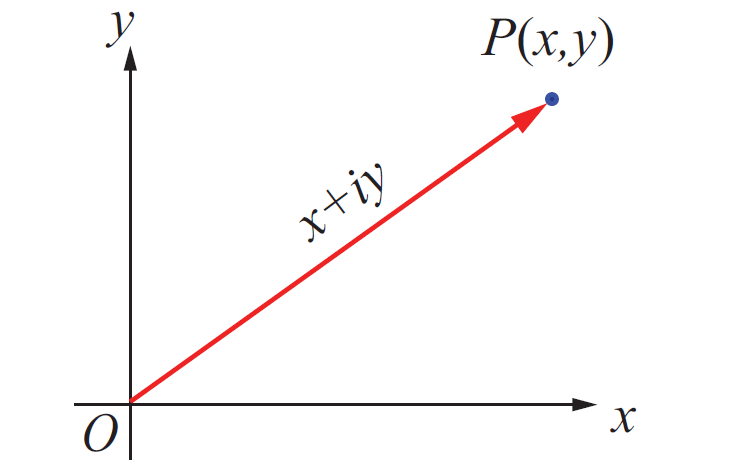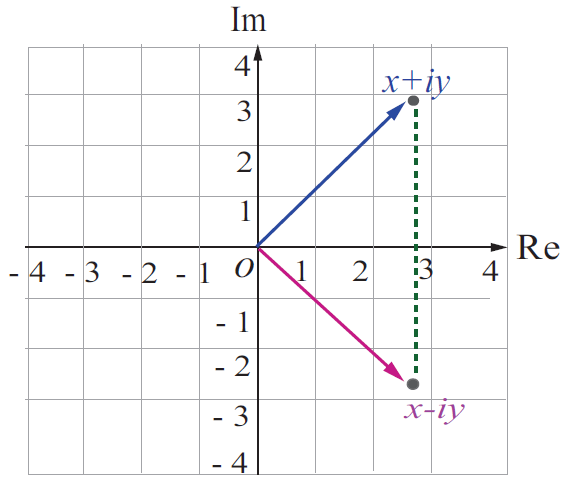AREA OF RHOMBUS
The area of a rhombus is equal to one half the product of the lengths of the diagonals.
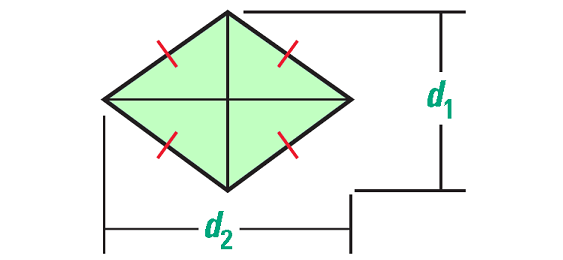
Let d1 and d2 be the lengths of diagonals of a rhombus.
Example 1 :
If the lengths of the diagonals of a rhombus are 16 cm and 30 cm, find its area.
Solution :
Formula for area of a rhombus :
= 1/2 ⋅ (d1d2)
Substitute 16 for d1 and 30 for d2.
= 1/2 ⋅ (16 ⋅ 30)
= 8 ⋅ 30
= 240 cm2
So, area of the rhombus is 240 square cm.
Example 2 :
Find the area of the rhombus shown below.
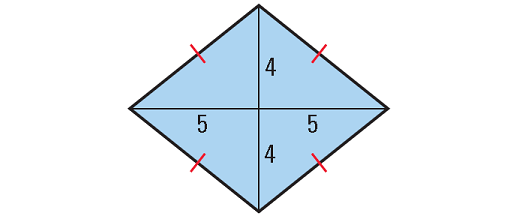
Solution :
In the rhombus shown above,
d1 = 5 + 5 = 10 units
d2 = 4 + 4 = 8 units
Formula for area of a rhombus :
= 1/2 ⋅ (d1d2)
Substitute 10 for d1 and 8 for d2.
= 1/2 ⋅ (10 ⋅ 8)
= 5 ⋅ 8
= 40
So, area of the rhombus is 40 square units.
Example 3 :
Area of a rhombus is 192 square cm. If the length of one of the diagonals is 16 cm, find the length of the other diagonal.
Solution :
Area of the rhombus = 192 cm2
1/2 ⋅ (d1d2) = 192
Substitute 16 for d1.
1/2 ⋅ (16 ⋅ d2) = 192
8 ⋅ d2 = 192
Divide each side by 8.
d2 = 24 cm
So, the length of the other diagonal is 24 cm.
Example 4 :
Area of a rhombus is 120 square units. If the lengths of the diagonals are 10 units and (7x + 3) units, then find the value of x.
Solution :
Area of the rhombus = 120 cm2
1/2 ⋅ (d1d2) = 120
Substitute 10 for d1 and (7x + 3) for d2.
1/2 ⋅ [10(7x + 3)] = 120
5(7x + 3) = 120
Divide each side by 5.
7x + 3 = 24
Subtract 3 from each side.
7x = 21
Divide each side by 7.
x = 3
Example 5 :
Area of the rhombus shown below is 48 square inches. What is the value of x ?
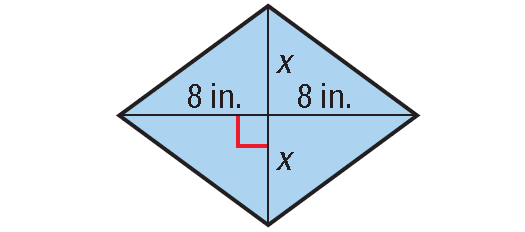
Solution :
In the rhombus shown above,
d1 = 8 + 8 = 16 units
d2 = x + x = 2x units
Given : Area of the rhombus is 48 square inches.
Then,
1/2 ⋅ (d1d2) = 48
Substitute 16 for d1 and 2x for d2.
1/2 ⋅ (16 ⋅ 2x) = 48
8 ⋅ 2x = 48
16x = 48
Divide each side by 16.
x = 3
Example 6 :
Find the area of the rhombus shown below.
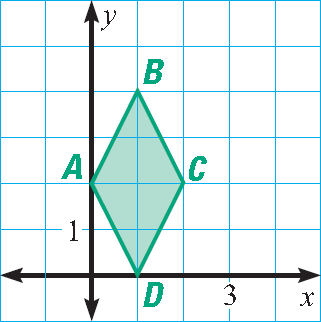
Solution :
Measure the lengths of the diagonals AC and BD.
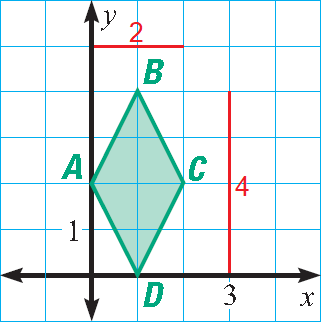
The lengths of the diagonals are 4 units and 2 units.
Formula for area of a rhombus :
= 1/2 ⋅ (d1d2)
Substitute 4 for d1 and 2 for d2.
= 1/2 ⋅ (4 ⋅ 2)
= 2 ⋅ 2
= 4
So, area of the rhombus is 4 square units.
Example 7 :
Find the area of the rhombus having each side equal to 17 cm and one of its diagonals equal to 16 cm.
Solution :
Let A, B, C and D be the vertices of the rhombus.
The diagonals of a rhombus will be perpendicular and they will bisect each other.
Then, we have
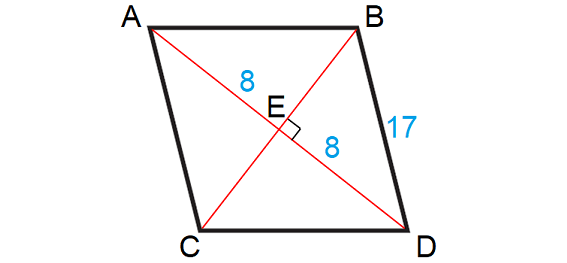
In the above rhombus, consider the right angled triangle BDE.
By Pythagorean Theorem,
BD2 = BE2 + DE2
172 = BE2 + 82
289 = BE2 + 64
Subtract 64 from each side.
225 = BE2
152 = BE2
15 = BE
Then,
EC = 15
Length of the diagonal BC :
BC = BE + EC
BC = 15 + 15
BC = 30 units
So, the lengths of the diagonals are 16 units and 30 units.
Formula for area of a rhombus :
= 1/2 ⋅ (d1d2)
Substitute 16 for d1 and 30 for d2.
= 1/2 ⋅ (16 ⋅ 30)
= 8 ⋅ 30
= 240
So, area of the rhombus is 240 square units.
Kindly mail your feedback to v4formath@gmail.com
We always appreciate your feedback.
©All rights reserved. onlinemath4all.com
Recent Articles
-
First Fundamental Theorem of Calculus - Part 1
Apr 17, 24 11:27 PM
First Fundamental Theorem of Calculus - Part 1 -
Polar Form of a Complex Number
Apr 16, 24 09:28 AM
Polar Form of a Complex Number -
Conjugate of a Complex Number
Apr 15, 24 11:17 PM
Conjugate of a Complex Number
